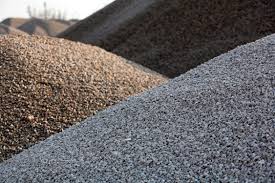
Breaking News
 Massie Introduces Bill to Get US Out of NATO
Massie Introduces Bill to Get US Out of NATO
 Somali Flag Raised Over Vermont School District
Somali Flag Raised Over Vermont School District
 "Kill Babies, Superman"? New CHILDREN'S Book Calls Abortion a "Superpower"
"Kill Babies, Superman"? New CHILDREN'S Book Calls Abortion a "Superpower"
 Gold Warning Issued as New Monetary System Takes Hold
Gold Warning Issued as New Monetary System Takes Hold
Top Tech News
 This tiny dev board is packed with features for ambitious makers
This tiny dev board is packed with features for ambitious makers
 Scientists Discover Gel to Regrow Tooth Enamel
Scientists Discover Gel to Regrow Tooth Enamel
 Vitamin C and Dandelion Root Killing Cancer Cells -- as Former CDC Director Calls for COVID-19...
Vitamin C and Dandelion Root Killing Cancer Cells -- as Former CDC Director Calls for COVID-19...
 Galactic Brain: US firm plans space-based data centers, power grid to challenge China
Galactic Brain: US firm plans space-based data centers, power grid to challenge China
 A microbial cleanup for glyphosate just earned a patent. Here's why that matters
A microbial cleanup for glyphosate just earned a patent. Here's why that matters
 Japan Breaks Internet Speed Record with 5 Million Times Faster Data Transfer
Japan Breaks Internet Speed Record with 5 Million Times Faster Data Transfer
 Advanced Propulsion Resources Part 1 of 2
Advanced Propulsion Resources Part 1 of 2
 PulsarFusion a forward-thinking UK aerospace company, is pushing the boundaries of space travel...
PulsarFusion a forward-thinking UK aerospace company, is pushing the boundaries of space travel...
 Dinky little laser box throws big-screen entertainment from inches away
Dinky little laser box throws big-screen entertainment from inches away
 'World's first' sodium-ion flashlight shines bright even at -40 ºF
'World's first' sodium-ion flashlight shines bright even at -40 ºF
Fill Dirt vs. Fill Sand vs. Fill Gravel

If you need fill for your project, you may be wondering which kind of fill is ideal to suit your needs. The three types of fill most consider are fill dirt, fill sand and fill gravel. Each is made up of a unique composition that makes each type of fill better for certain projects. For example, fill dirt can be easily compacted so that it can be used to create a strong foundation. Fill sand can also be compacted, but the particles are so small that this material cannot be relied on to stay sturdy and stable like fill dirt. However, because fill sand is composed of smaller particles, it makes this particular type of fill much better for situations that involve drainage.
Comparing Fill Dirt, Fill Sand & Fill Gravel
When trying to figure out which type of fill to choose, consider what you need the fill to do. Do you need it to help drainage? Level terrain? Or maybe you're looking for something that could be ideal to create a pathway. Understanding how each type of fill works and what it is most commonly used for will help you make your decision.



